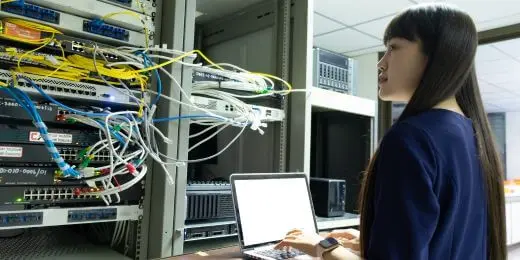What is ISO/IEC 42001?
ISO/IEC 42001 is a global standard that outlines the criteria for setting up, executing, upkeeping, and steadily enhancing an Artificial Intelligence Management System (AIMS) in companies. It’s tailored for organizations that offer or use AI-driven products or services, guaranteeing AI systems’ conscientious development and application.
Benefits
There are numerous benefits to implementing ISO/IEC 42001:2023 within an organization. Here are some of the main advantages:
- Safely integrate Artificial Intelligence (AI) with a focus on responsibility and accountability.
- Ensure security, safety, fairness, transparency, and data and AI system quality are upheld across the entire life cycle.
- Demonstrate that implementing AI is a strategic choice with well-defined goals.
- Establish robust governance for AI.
- Achieve a harmonious blend of governance and innovation.
- Ensure the responsible use of AI, particularly regarding its ongoing learning process.
- Verify that all necessary precautions have been implemented.
- Save costs through improved efficiency and reduced risks.
- Integrate essential frameworks with expertise to establish vital procedures such as risk management, life cycle management, and data quality management.
Core Components of ISO/IEC 42001:2023
The ISO 42001 standard is built upon key components crucial for the efficient management of AI systems, such as:
- AI Management Systems (AIMS) – It includes the organization’s frameworks, policies, procedures, and processes for managing AI applications.
- AI Risk Assessment – A systematic approach to identifying, analyzing, and mitigating potential risks associated with AI systems.
- AI Impact Assessment – The evaluation of the possible impacts of AI systems on stakeholders, including ethical, societal, and environmental implications.
- Data Protection and AI Security – Ensuring compliance with privacy laws and fortifying AI systems against threats is crucial.
This standard also includes various annexes offering detailed guidance crucial for organizations. Here’s a brief overview of these annexes:
- Annex A: Provides a comprehensive guide for building AI systems, including a set of regulations.
- Annex B: Provides actionable guidance on implementing controls outlined in Annex A, offering methodologies for effective data management.
- Annex C: Outlines goals and pinpoints potential risks associated with the organizational implementation of AI.
- Annex D: Establishes standards tailored to specific domains and industry sectors.
Steps for ISO 42001:2023 Compliance
Organizations aiming to meet ISO 42001 standards must:
- Conduct a Gap Analysis – Evaluate existing procedures against ISO 42001 standards to pinpoint areas requiring adjustments.
- Develop an AI Management System (AIMS) Framework – Based on the gap analysis, develop a tailored AIMS framework that reflects your organization’s goals and objectives.
- Conduct Risk and Impact Assessments – Under ISO 42001, organizations must adhere to:
- Perform thorough AI risk assessments to pinpoint potential hazards to users and society.
- Conduct AI impact assessments to grasp the wider implications of deploying AI on individuals and communities.
- Develop and deploy strategies to address identified risks and reduce adverse effects.
- Implement Ethical AI Practices – Ensure ethical considerations are integrated into the design, development, and deployment of AI systems.
- Establish Data Protection Measures – ISO 42001 places significant emphasis on:
- Ensuring that AI systems adhere to relevant data protection laws and regulations
- Implementing strong security measures to safeguard AI systems against unauthorized access, data breaches, and cyber threats
- Ensuring transparency in AI decision-making processes that’s crucial for building trust and accountability
- Prepare for Certification – Once the necessary changes have been implemented, organizations can undergo an audit to receive ISO 42001 certification.
- Continuously Monitor and Improve – Consistent monitoring and improvement of the AIMS are crucial to maintaining ISO 42001 compliance and ensuring the responsible use of AI.
FAQs About ISO/IEC 42001:2023
No, ISO 42001 is not mandatory. However, due to its growing importance and increasing acknowledgment, it is poised to serve as the leading reference point for AI management systems in the days ahead.
Yes, the standard is meant to work for different AI applications and contexts. ISO/IEC 42001 promotes the responsible use and governance of AI technologies across industries by integrating robust AI management systems into the organization’s existing structures.
There are no specific prerequisites, but organizations should have a robust AI Management System aligned with the standard’s requirements. This includes documented policies, processes, and risk management practices prepared for third-party audit review.
ISO/IEC 42001:2023 uses a consistent structure to match other ISO management system standards better, making it easier to implement and integrate with quality (ISO 9001), safety, security, and privacy (ISO 27001) standards.




